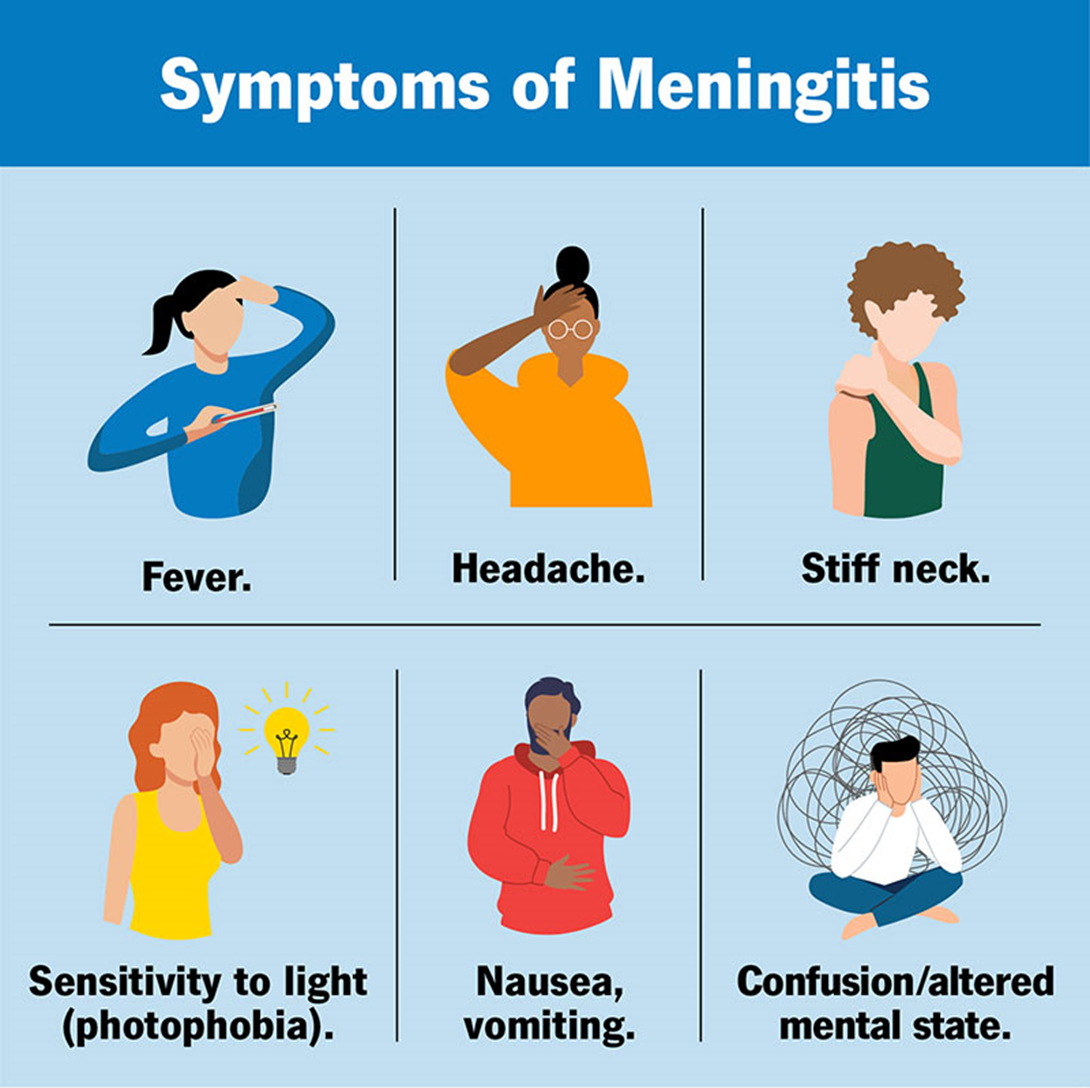A nurse is caring for an adolescent who was brought to the emergency department (ED) with a high fever, headache, and neck stiffness. The nurse reviews the adolescent's cerebrospinal fluid (CSF) analysis results and notes the following:
- WBC count 300 cells/microliter (normal range: 0 to 10 cells/microliter)
- Protein 45 mg/dL (normal range: 15 to 45 mg/dL)
- Glucose 40 mg/dL (normal range: 50 to 75 mg/dL)
- Color Turbid (normal: clear and colorless)
The nurse should suspect that the adolescent has which of the following conditions?
Bacterial meningitis.
Viral meningitis.
Encephalitis.
Brain abscess.
The Correct Answer is A
Choice A reason: Bacterial meningitis is a probable condition, as it is an infection of the membranes that cover the brain and spinal cord, caused by various bacteria, such as Streptococcus pneumoniae, Neisseria meningitidis, or Haemophilus influenzae. The adolescent has many signs and symptoms of bacterial meningitis, such as fever, headache, and neck stiffness.

Choice B reason: Viral meningitis is not a likely condition, as it is an infection of the membranes that cover the brain and spinal cord, caused by various viruses, such as enteroviruses, herpes simplex virus, or mumps virus. The adolescent has some signs and symptoms of viral meningitis, such as fever, headache, and neck stiffness, but they are usually less severe than bacterial meningitis.
Choice C reason: Encephalitis is not a probable condition, as it is an inflammation of the brain tissue, usually caused by viral infections, such as herpes simplex virus, West Nile virus, or rabies virus. The adolescent has some signs and symptoms of encephalitis, such as fever, headache, and altered mental status, but they are usually accompanied by focal neurological deficits, such as seizures, paralysis, or cranial nerve palsies.
Choice D reason: Brain abscess is not a definite condition, as it is a collection of pus within the brain tissue, usually caused by bacterial infections that spread from other parts of the body, such as the ear, sinus, or lung. The adolescent has some signs and symptoms of brain abscess, such as fever, headache, and altered mental status, but they are usually accompanied by focal neurological deficits, such as seizures, paralysis, or cranial nerve palsies.
Nursing Test Bank
Naxlex Comprehensive Predictor Exams
Related Questions
Correct Answer is D
Explanation
Choice A reason: This is not a correct statement by the child. The child should take their regular insulin as prescribed, even when they are sick. Insulin helps the body use glucose for energy and prevents high blood sugar levels, which can cause complications. The child may need to adjust their insulin dose or frequency depending on their blood glucose levels, food intake, and activity level.
Choice B reason: This is not a correct statement by the child. The child should not store unopened bottles of insulin in the freezer. Freezing can damage the insulin and make it ineffective. The child should store unopened bottles of insulin in the refrigerator, away from direct light and heat. The child should store opened bottles of insulin at room temperature and discard them after 28 days.
Choice C reason: This is not a correct statement by the child. The child's morning blood glucose should be between 70 and 110 mg/dL, according to the American Diabetes Association. A blood glucose level between 90 and 130 mg/dL may indicate that the child has hyperglycemia, or high blood sugar, which can cause symptoms such as thirst, hunger, fatigue, and frequent urination.
Choice D reason: This is a correct statement by the child. The child should eat a snack half an hour before playing soccer or engaging in any physical activity. Physical activity lowers blood glucose levels, and a snack can help prevent hypoglycemia, or low blood sugar, which can cause symptoms such as shakiness, sweating, dizziness, and confusion.
Correct Answer is B
Explanation
Choice A reason: Glyburide is an oral medication that lowers blood sugar by stimulating the pancreas to produce more insulin. It is not used for type 1 diabetes mellitus, as the pancreas cannot produce enough insulin in this condition. Glyburide is used for type 2 diabetes mellitus, which is caused by insulin resistance.
Choice B reason: Obtaining an influenza vaccine annually is recommended for people who have type 1 diabetes mellitus, as they are more prone to complications from the flu, such as pneumonia, ketoacidosis, and hospitalization. The vaccine can help prevent or reduce the severity of the flu and its complications.
Choice C reason: Injecting insulin in the deltoid muscle is not the best practice for administering insulin, as the absorption rate and onset of action may vary depending on the muscle mass and blood flow. The preferred sites for insulin injection are the abdomen, the upper arms, the thighs, and the buttocks, as they have more subcutaneous fat and less muscle tissue. The injection site should also be rotated to prevent lipodystrophy.
Choice D reason: Administering glucagon for hyperglycemia is not appropriate, as glucagon is a hormone that raises blood sugar by stimulating the liver to release glucose. It is used for hypoglycemia, or low blood sugar, which is a common and serious complication of type 1 diabetes mellitus. Hyperglycemia, or high blood sugar, is treated with insulin, fluids, and electrolytes.
Whether you are a student looking to ace your exams or a practicing nurse seeking to enhance your expertise , our nursing education contents will empower you with the confidence and competence to make a difference in the lives of patients and become a respected leader in the healthcare field.
Visit Naxlex, invest in your future and unlock endless possibilities with our unparalleled nursing education contents today
Report Wrong Answer on the Current Question
Do you disagree with the answer? If yes, what is your expected answer? Explain.
Kindly be descriptive with the issue you are facing.
